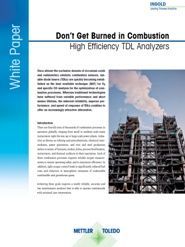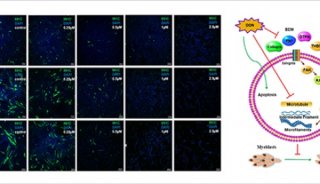White paper: Don`t Get Burned in Combustion

Control of combustion processes requires reliable oxygen (O2) and carbon monoxide (CO) measurement and control to ensure safety, maximize efficiency, and minimize atmospheric emissions. Therefore, selecting the right gas measurement technology is vital to achieving these goals. Due to their inherent reliability and speed of response, tunable diode laser (TDL) gas analyzers have become one of the most preferred technologies for gas measurement in combustion processes. A new generation of TDLs offers additional benefits, as explained in METTLER TOLEDO's new white paper.
To
minimize fuel costs, emission of combustible, and greenhouse gases; and
to protect plant staff and equipment, it is necessary that combustion
processes take place in neither an air rich nor a fuel rich atmosphere.
Maintaining this balance in the burner requires continuous, accurate
measurement of O2 and CO, and therefore the use of reliable and robust gas analyzers.
The slow response time and high maintenance requirement of paramagnetic O2 and non-dispersive infrared for CO analyzers has seen their replacement by zirconium oxide O2 and pellistor-based catalytic sensors, respectively. However, inadequate sensor lifetime in the case of the former, and poor selectivity to CO and unreliability in the case of the latter means plant engineers continue to look for a better solution. For many, tunable diode laser gas analyzers are proving to be the answer.
Since their introduction in the 1990s, there has been a rapid uptake in TDLs. This is largely due to their low maintenance requirement, in situ measurement, tolerance to dust in the process, and selectivity to the target gas. These benefits have led to TDLs becoming the preferred gas measurement technology by numerous chemical and petrochemical companies today.
One of the few downsides of TDLs is their need for the laser sender and receiver units to be installed opposite each other in the process pipe or walls. This necessitates implementing two openings for flange connections and very careful alignment of the separate units. Temperature changes in the process can lead to distortion of pipes and walls, loss of measurement signal, and therefore the need for realignment. In addition, such cross-stack TDLs consume large volumes of purge gas required to keep the optics clean.
A new generation of TDLs takes the key benefits of the technology, but overcomes the drawbacks of high purge gas demand and alignment difficulties to provide a flexible, easy to install, compact, and reliable solution.
In a new white paper, "Don’t Get Burned in Combustion – High Efficiency TDL Analyzers", METTLER TOLEDO outlines the relationship between O2 and CO levels in combustion burner efficiency, and explains the differences of the new generation of TDLs over other measurement technologies.
The complimentary white paper is available at www.mt.com/TDL-analyzers-combustion
-
焦点事件









